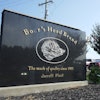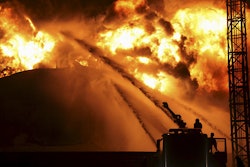“Hill Street Blues” was a groundbreaking television drama set in 1980’s Chicago that established the genre for gritty, compelling, and violent police dramas. One of the classic lines before the always challenged patrol officers departed for the day was, “Let’s Be Careful Out There.” Fast forward 25 years to Forward Operating Bases (FOB) located in Iraq and Afghanistan and you often heard the very same line from a battle-tested Sergeant as he or she prepared soldiers for their daily, dangerous tasks.
Safety processes and procedures is a seemingly highly contradictory concept when initially applied to the US Army in ground combat operations. After all, combat and training for combat is inherently dangerous, risking, and fraught with peril. Soldiers get hurt due to inescapable and unplanned events ... Right? Wrong!
In the US Army, leaders and soldiers at all levels constantly plan, rehearse and act to do dangerous activities as safely as possible even while under dangerous conditions. In the US Army, dangerous conditions are a factor and not an excuse to not plan and to not prepare to reduce accident rates and accident severity.
Most business leaders would be startled to know that the US Army Accident rate is nearly 9X lower than the accident rate for US industries. Just like any business, the Army on a daily basis drives thousands of miles, repairs heavy machinery, operates logistics depots, conducts refueling operations, and operates restaurants (dining facilities). And unlike other US business, soldiers parachute from planes, conduct shooting drills and train with complex explosives. The great opportunity for US business is that they can embrace and adopt the majority of the US Army’s safety techniques to improve and reduce their accident rates.
The US Army’s safety practices are built on four major concepts.
Safety Principle #1: Common & ongoing individual and leader training. In nearly every type of work, from surgery to manufacturing, any source of variability is a potential point for a safety incident. In the US Army, all soldiers and leaders have a common training foundation and then a common education foundation in their particular operating specialty. Businesses can ensure that, as much as possible, then embrace common training principles for both their front line workers as well as their leaders. A common training platform ensures that all workers understand, practice, and embrace safe operating practices from their very first day.
Safety Principle #2: Safety is part of everyone’s job. When the US Army start their daily missions, whether it is a ground convoy or a shooting range, the day begins with a safety briefing, medical evacuation procedures, and a rehearsal of the day’s most dangerous activities. Anyone, from the newest Private to the seasoned Sergeant, can call a safety halt if they fell there is a danger to anyone. This adoption of safety as integral to everyone’s job is vital. When everyone has a role in safety, then everyone is looking to create a safe environment – no one is sitting on the side lines.
Safety Principle #3: Established & universal safety Planning procedures. The US Army has a standard safety planning process called the Risk Management Process. In the Risk Management Process, it has standard risk identification, risk mitigation, and risk planning procedures that use a wide array of on line tools, standard training, and best practice sharing. The use of a common procedure for all operations, wide spread best practice sharing, and a focus to find the best way to do dangerous activities safely make the US Army a leader in performing dangerous activities, safely.
Safety Principle #4: The After Action Review process. The US Army embraces the After Action Review (AAR) process. The AAR is used after every major and minor training and operational activity at all levels by all leaders and every leader is trained how to conduct an AAR. In the AAR, the unit allows every member to participate regardless of rank and the team discusses: (1) What happened, (2) What went well, (3) What did not go well, and (4) What is the plan to fix what did not go well. The AAR is a universal, all encompassing team improvement process to identify areas that need to be improved and how to improve them.
The US Army’s safety process is unique in the fact that it is a positive approach towards safety planning and safe practice implementation. The US Army embraces the concept of safety because the Army as an institution realizes that the dangerous mission MUST be accomplished for the national good, but also that US Army personnel, material, and resources are vital national assets that must be protected at all costs. Businesses need to adopt the US Army mindset that they too need to discover how to adopt, practice, and enforce the consistent performance of dangerous tasks safely while in a high-risk environment.
“Let’s Be Safe Out There,” but let’s create a culture and supporting procedures to plan, to rehearse and to improve the ability of business to embrace safe operating practices.
Chad Storlie, Author, Combat Leader to Corporate Leader & Battlefield to Business Success



















